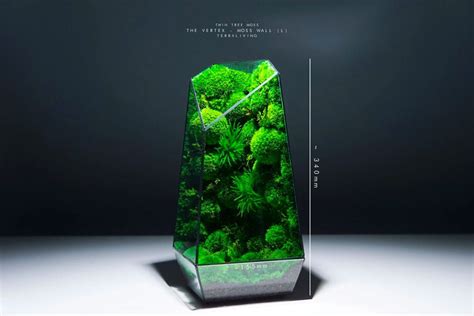Introduction

In today’s fast-paced and often overwhelming world, finding moments of tranquility and connection with nature can be essential for our well-being. Terrariums, small-scale ecosystems enclosed in transparent containers, offer a captivating way to bring the beauty and serenity of nature indoors. Combined with mindfulness practices, terrariums can serve as powerful tools for relaxation, stress reduction, and overall well-being.
Benefits of Terrariums
- Improved Air Quality: Terrariums act as miniature air purifiers, absorbing harmful toxins and releasing oxygen.
- Stress Relief: Studies have shown that viewing nature scenes, such as those in terrariums, can reduce stress hormone levels and promote relaxation.
- Cognitive Enhancement: The intricate details and vibrant colors of terrariums stimulate the brain and improve attention.
- Sense of Accomplishment: Creating and maintaining a terrarium can foster a sense of purpose and accomplishment, boosting self-esteem.
Mindfulness Practices for Terrarium Care
- Observation: Take a few minutes each day to observe your terrarium. Notice the intricate details, the interplay of colors, and the slow growth of plants.
- Gratitude: Express gratitude for the beauty and tranquility your terrarium brings into your life.
- Intention: Set an intention to connect with nature and find peace while caring for your terrarium.
- Deep Breathing: Use the terrarium as a cue to practice deep breathing exercises, inhaling slowly and exhaling gradually.
- Mindful Watering: Water your terrarium only when necessary, and pay attention to the soil moisture and plant needs.
5 Ways Terrariums Enhance Mindfulness
- Create a Natural Haven: Terrariums bring a piece of nature indoors, providing a calming and restorative environment.
- Foster Present-Moment Awareness: Maintaining a terrarium requires regular care and observation, encouraging focus on the present moment.
- Promote Sensory Engagement: The sights, sounds, and scents of a terrarium engage multiple senses, creating a mindful experience.
- Cultivate Patience and Acceptance: Plant growth is a slow process, teaching us patience and acceptance of the natural rhythms of life.
- Offer a Source of Reflection: Terrariums serve as a microcosm of our own lives, inviting introspection and self-awareness.
Practical Tips for Enhancing Mindfulness with Terrariums
- Choose Plants Intentionally: Select plants that resonate with your personality or needs, such as calming succulents or uplifting ferns.
- Create a Calming Environment: Place your terrarium in a peaceful spot, away from noise and distractions.
- Use Natural Elements: Incorporate natural materials like rocks, sand, and driftwood to enhance the connection to nature.
- Regularly Clean and Care: Maintain your terrarium with care, ensuring it remains a healthy and vibrant ecosystem.
- Share with Others: Share the beauty and benefits of your terrarium with loved ones, fostering a sense of community and shared well-being.
Inspiring Applications of Terrariums
- Therapeutic Gardens: Terrariums can be incorporated into therapeutic gardens, providing a relaxing and restorative space for individuals with various health conditions.
- Mindful Workspaces: Small terrariums can be placed on desks or in workspaces to promote relaxation and reduce stress levels.
- Educational Tools: Terrariums can be used in schools and nature centers to teach children about ecology and mindfulness.
Market Insights
The global terrarium market is projected to reach $1 billion by 2025, driven by increasing demand for indoor greenery and the growing awareness of mindfulness practices. Asia-Pacific is expected to be the fastest-growing market, with a surge in interest from Japan, China, and South Korea.
Future Trends and Innovations
- Biophilic Design: Terrariums will continue to play a significant role in biophilic design, bringing nature indoors to enhance well-being.
- Smart Terrariums: IoT-enabled terrariums will monitor plant health, provide automated watering, and offer personalized lighting for optimal growth.
- Air-Purifying Terrariums: Terrariums will be increasingly designed to purify air, especially in urban environments with high pollution levels.
Reviews and Testimonials
“My terrarium has become an oasis of peace in my busy home. It inspires me to take deep breaths and find moments of tranquility.” – Sarah, mindfulness practitioner
“I love how my terrarium brings nature indoors and helps me reduce stress. It’s like having a mini garden on my desk.” – John, office worker
“Creating and maintaining my terrarium has been a therapeutic experience. It’s taught me patience and given me a newfound appreciation for the natural world.” – Mary, nature enthusiast
“I often use my terrarium as a tool for meditation. Its beauty and tranquility help me clear my mind and focus on the present moment.” – Amy, yoga instructor
Conclusion
Terrariums offer a unique and powerful way to enhance mindfulness and well-being in our daily lives. By combining the beauty of nature with mindfulness practices, we can create mini ecosystems that promote relaxation, stress relief, and a deeper connection to ourselves and the environment. As we move into the future, terrariums will continue to evolve, offering innovative and inspiring applications for improving our physical, mental, and emotional health.





















